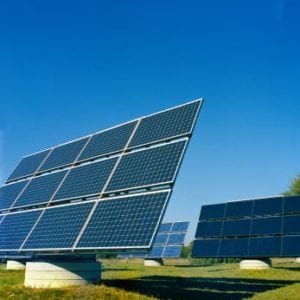SOUTH Africa needs cheap and reliable energy, no one could dispute that. But renewable energy is neither. As a wandering albatross that clattered onto my balcony this week told me, it is actually making e-tolls on Gauteng’s freeways look positively good value. The unpalatable truth is that renewable energy is a fad, vigorously promoted by the green community.
It is true that good progress has been made on costs in wind and photovoltaic (the production of voltage when exposed to radiant energy, like the sun) — which engineer Chris Herold says raises another issue. He relates the comment by an Eskom spokesman to the effect that “the cost of photovoltaic and concentrated solar power is set to fall steeply”. If that is the case, he asks, “why should we be crazy enough to invest heavily in obscenely over-priced solar generation that will probably be obsolete before it is commissioned?” The trouble is that wind and solar have capacity factors as low as 20% or less. In other words, these contraptions can be relied on to produce only 20% of their installed capacity. With their unreliable and unpredictable power output, the renewable energy programme doesn’t stop Eskom from building new coal-fired or nuclear power stations. Even worse, it doesn’t help Eskom burn less coal. Because these energy sources are unpredictable (the wind stops blowing, or it clouds over) and because coal-fired stations can’t be turned on and off on demand but need to run on constant conditions, Eskom has to keep the spinning reserve going even when renewables are delivering power, in case they suddenly stop. In its first phase, the renewable energy independent power producers procurement programme will deliver 3,725MW. Of this, 1,850MW will be wind (tariff on average R1/kWh), 1,450MW photovoltaic (R2/kWh), and 200MW concentrated solar thermal (R2.60/kWh). It is reasonable to assume that wind will deliver 25% of its installed capacity, photovoltaics 20% and concentrated solar power 40% (it can include thermal storage). This means that, when most of these projects come on stream in 2014, Eskom will have to fork out more than R13bn a year of our money to pay the producers. Now look at e-tolls. The project cost is R25bn. However, in two years the amount paid for renewable energy will be larger than e-tolling and over the 20-year period of the power purchasing agreements the cost will exceed that of e-tolling by an order of magnitude. So, the South African consumer will be required to pay R13bn (escalating) a year to fund a process that won’t help. Every megawatt of renewable power needs 1MW of fossil or nuclear power as a standby because renewable energy is unreliable. Even the Department of Energy has admitted that the job creation and local manufacturing which it fondly fantasised could be provided is disappointing, so that aspect gets flushed away too. Why hasn’t the parliamentary oversight committee on energy done the sums and asked the questions?…
THE relationship between buildings and agriculture has been around for a long time. The earliest known example is the hanging gardens of Babylon (600 BC), one of the seven wonders of the ancient world, although they may have been purely legendary.
With the world’s population heading for 9-billion by 2050 (of whom 80% or 7.2-billion will live in cities) the United Nations reckons food production will have to increase by as much as 70%. That will require a lot more land as well as greatly improved technology.
Dickson Despommier, professor of environmental health sciences and microbiology at Columbia University in New York, developed the concept of a vertical garden with graduate students in 1999 when he challenged them to see if they could feed the population of Manhattan (about 2-million) from rooftop gardens. That led to the development of a vertical farming model.
Now the world’s first commercial vertical farming venture has been opened in Singapore. Covering in effect 1.3ha, the farm produces three types of vegetables which it sells through a local supermarket. The company wants to increase the number of vertical food production towers, situated in skyscraper atriums, from 130 to 300, which would increase its daily output of vegetables to two tons next year.There are disadvantages, of course. One is that greenhouse products need lots of carbon dioxide, so owners burn fossil fuels purely for this purpose.
Another is that the economics remain unproven. It might be easier to find a way to curtail this endless population expansion. JOHANNESBURG residents have good cause to be alarmed at the dysfunctional state of their city and the services they pay for but receive only haphazardly. Last week a gas heater in a home in the suburb of Parkhurst blew up, and the female occupant was unable to extinguish the resulting fire. Although officers of the security company she employs arrived on the scene, as did policemen from the Parkview police station, efforts to get the fire brigade to respond were fruitless. The telephone at the fire station was not answered. Neighbours tried to extinguish the flames, which by then were devouring the entire house, with garden hoses. Eventually, having finally been alerted, a fire engine arrived on the scene but its equipment was faulty. A second fire engine arrived about an hour later — by which time the house had been destroyed. Another Parkhurst resident tells me that she tried to report a theft from her home and called Rosebank police station on four occasions. “They didn’t answer any of my calls. There is no accountability, no one cares, and all we do is pay tax,” she said. “So what are we supposed to do now? Organise our own fire brigade?” Residents can add to this tale, and thousands others like it — potholed roads, high charges for electricity and water, billing disasters and aggressive municipal employees who trash their own city when rampaging in pursuit of ever higher wages without any corresponding improvement in the level of services provided. Source: http://www.bdlive.co.za







